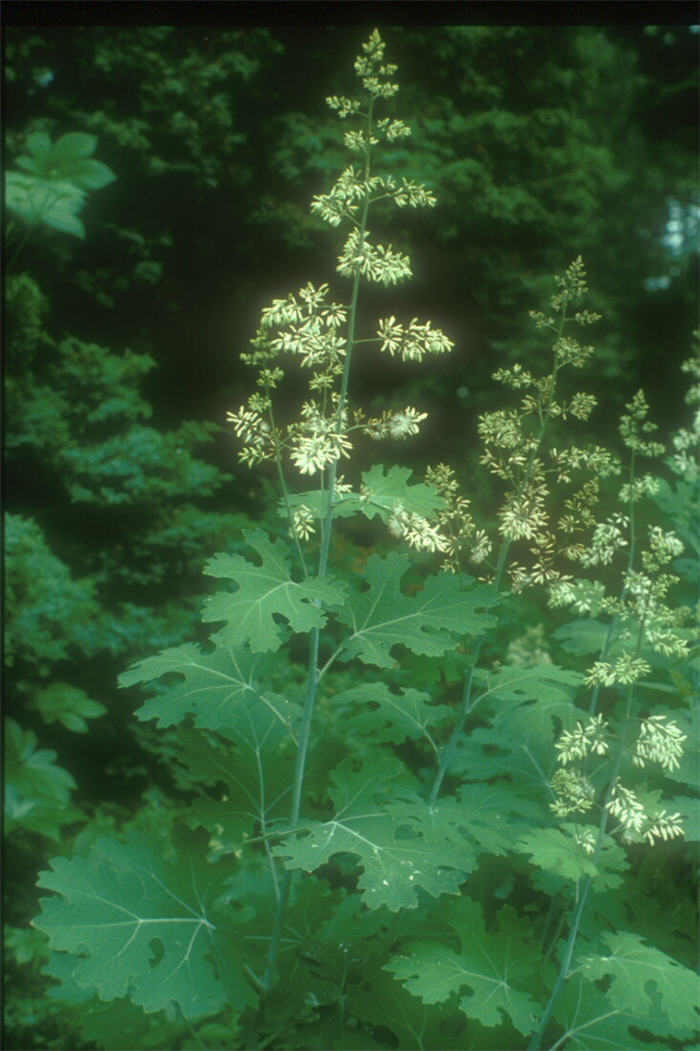| Botanical Name: Macleaya cordata | |
| Common Name: Plume Poppy |

-
Anatomy
-
Culture
-
Design
Plant Type
Perennial
Height Range
3-6', 6-12'
Flower Color
White
Flower Season
Summer
Leaf Color
Grey Green, Light Green, White
Bark Color
n/a
Fruit Color
n/a
Fruit Season
n/a
Sun
Full, Half
Water
Medium, Extra in Summer
Growth Rate
Fast
Soil Type
Sandy, Clay, Loam
Soil Condition
Average, Rich, Well-drained
Soil pH
Neutral
Adverse Factors
Invasive
Design Styles
English Cottage, Mediterranean, Ranch, Tropical, Woodland
Accenting Features
Specimen
Seasonal Interest
Summer
Location Uses
Background, Perennial Border, Shrub Border, Foundation, Walls / Fences
Special Uses
Filler, Mass Planting, Naturalizing
Attracts Wildlife
n/a
Information by: Stephanie Duer
Photographer: Linda Engstrom, JJ Neilso
Photographer: Linda Engstrom, JJ Neilso
-
Description
-
Notes
Plume poppy is a vigorous rhizomatous perennial that grows to 5 to 8 feet tall and half as wide. It is noted for its attractive flower panicles, large scalloped leaves and spreading habit. Creamy white, airy flowers bloom on branches along a tall stalk above the foliage from mid to late summer. Lobed and scalloped leaves are light green to olive green above and gray-white beneath. Well suited to the backs of shrub and perennial borders where it has room and afternoon shade.
Grow in sandy-loam, well-drained soils in full sun to part shade, though in our hot summers afternoon shade is appreciated. Plants will spread somewhat aggressively by rhizomes in optimum growing conditions. Fertile soils and shade encourage more rapid spread, though it spreads less aggressively in dry shade. Plants may self-seed in the garden; deadheading spent flowers will lessen unwanted reseeding. Notwithstanding plant height, staking is usually not required. Cut back in later winter.